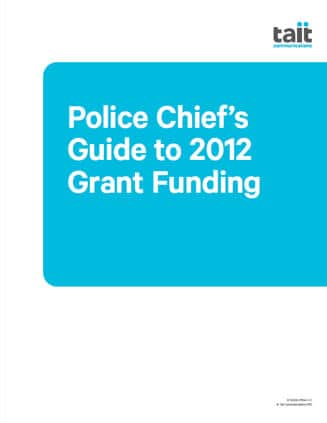 As you’re probably well aware, grants are part of the budget picture for nearly every nonprofit and municipal organization in the United States.
As you’re probably well aware, grants are part of the budget picture for nearly every nonprofit and municipal organization in the United States.
Without the support of grant funding, many necessary projects would never get off the ground.
This article provides key insights into the grants landscape that will help you find the funding you need for the technology you want.
Grant Sources
Grants typically come from one of three sources:
- Federal
Approximately $400 billion each year is issued from one of the 26 Federal grantmaking agencies. These grants tend to be large (often $250,000 to $500,000 in size) and restricted to broad, national priorities; - State
Funding amount varies by state and is issued from a state agency, either using funds derived from within the state or passing through funds received from elsewhere (most often a federal agency). These grants tend to be more accessible, smaller than federal grants, and more in line with state priorities; and - Private
Foundations and corporations provide approximately $35 billion each year in funding, and they tend to be the most responsive to locally developed projects and local needs.
All three of these sources may figure in to an organization’s funding strategy. A common approach is to fund the bulk of a project with federal and state funds. Then, it is common place to apply to foundations to support the local elements that fall outside the parameters of the government funders, or to cover the required matching costs.
Grant Pathways
Local agencies may receive federal grant funds via a direct grant program or a pass-through grant process.
- Direct
Funds go directly from the federal funding agency to local recipients; or - Pass-through
Funds go through the state, and possibly even a regional entity, before they are made available to the local entity. States may still have to apply for these funds and often keep a portion to cover administrative costs. Each state will maintain its own regranting process, timelines, and priorities.It is important to understand the distinction between direct and pass-through grants, since pass-through grants are controlled by the states and timing. Application procedures, as well as the priorities the grant will fund, usually vary on a state by state basis.
Grant Types
Grant funds can be disbursed from a grantor to a grantee using different methods:
- Formula
Funding allocations are based on a formula – such as student poverty (No Child Left Behind Grants), risk assessments (State Homeland Security Grants) or number of acute care hospital beds (Hospital Emergency Preparedness Grants). As long as an eligible applicant completes an application in the timeline and format required by the funder, they are virtually assured of receiving the money their formula has determined they’re eligible for; - Competitive
Applications are competitively scored based on a set of objective and/or subjective criteria, and the score the proposal receives factors in to the award allocation; or - Earmark
Grant awards are decided at the legislative level during the budgeting process. Organizations must apply to their local Congressman or State Representative to obtain these funds.
In the instance of a Federal pass-through grant, once states have received the money from the grant, then they may pass it through via formula, competition or a combination thereof. The method states use to distribute their funding has significant implications for how organizations can maximize local funding opportunities.
Determining the Desirability of a Particular Grant
You may not have the resources or even the desire or need to write all of the grants identified in the research stage. So, it may be necessary to qualify the grants to which you should apply for the project, and those you’ll leave for another time or another project. The following criteria may be helpful in determining which grants to pursue:
- Total funding available
Gives you an idea how broad the program will be and how competitive; - Application burden
Some programs require 100 page narrative, while others may look for 10 or less; - Matching requirements
Similarly, some programs require a dollar for dollar match, while others may require a 5% match or no cost sharing at all; - Scale
You don’t want to write thousands of $5,000 requests to get your $500,000 project funded or lock yourself into a lot of extra activities that you didn’t intend just to get what you needed; - Collaboration/partnering requirements
Beyond what you have in place are a factor to consider; - Lead time
More lead time generally equals more time to develop the project and articulate that in the grant application – six weeks is good, and three weeks is almost essential; - Track record with the funder
Generally more important for local funders than federal sources, but a consideration nonetheless.
For more information about grant funding, you can sign up to receive our guides here



